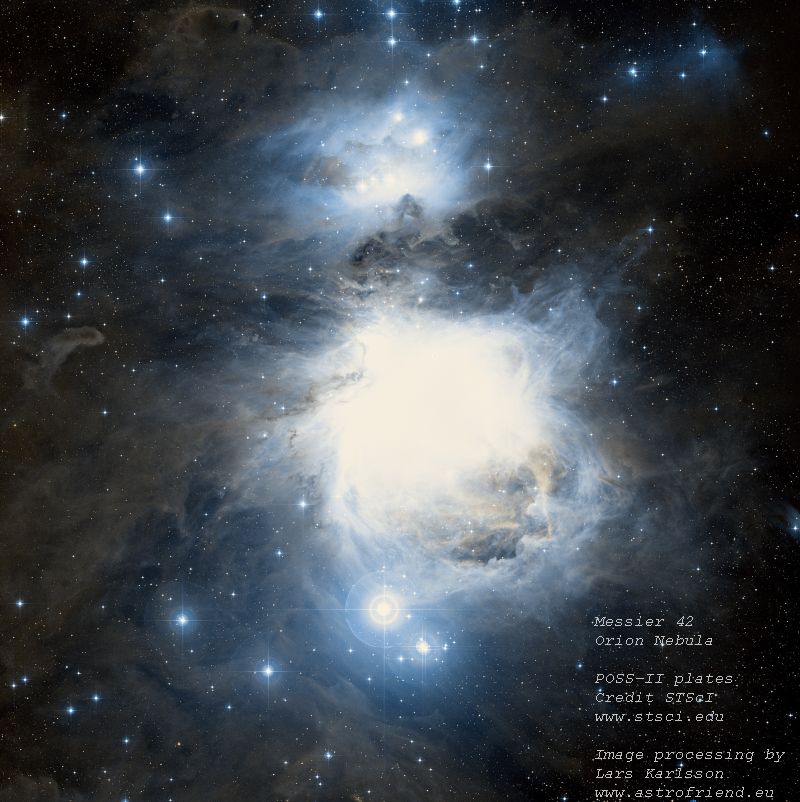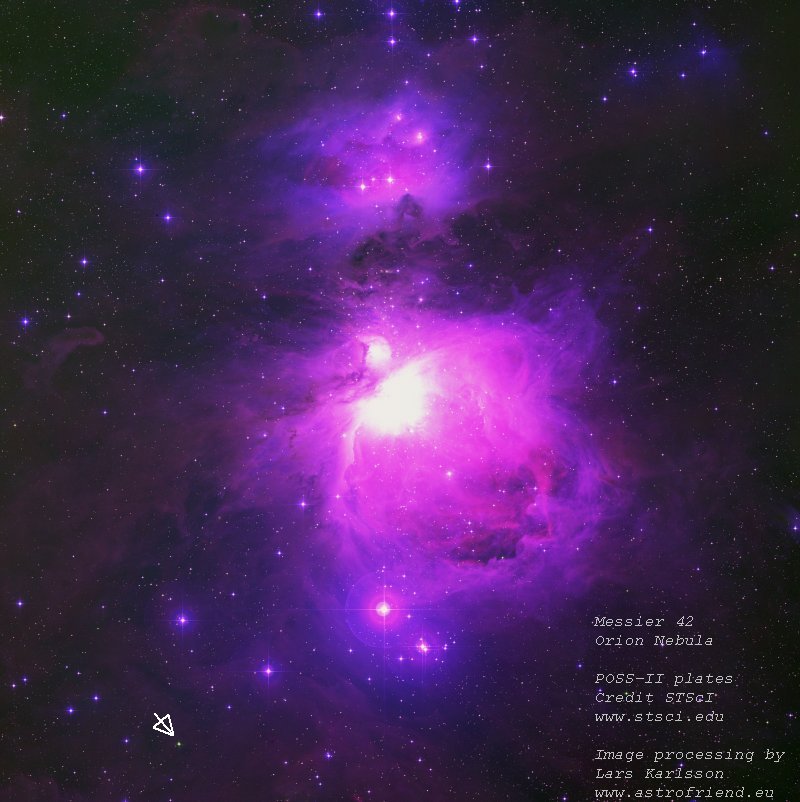|
Advertisement / Annons: |
Astronomy Science Data, POSS-II
|

|
| Coordinates/Direction : | RA: 05h35m, DEC: -05o23' |
| Object size : | 65' x 60' (whole image 120' x 120') |
| Object magnitude : | 4.0 |
| Object : | Messier 42 |
| Date : | 1985 to 2000 |
| Lens/telescope : | Samuel Oschin Telescope |
| Film/CCD : | POSS-II, credits: STScI |
| Exp. time : | IR 90 minutes, Red 65 minutes, Blue 60 minutes |
| Image process tool : | AstroImageJ, Fitswork, Irfanview |
| Processing : | Green channel from average of red and blue |
| Site : | Mount Palomar, USA |
| Comment : | Compare what you get from your own telescope, the core of nebula oversaturated. The blue light comes from reflection in the dust from hot blue stars in the neighborhood. |
| More to know : |
Wikipedia: https://en.wikipedia.org/ wiki/ Orion Nebula |
Use of the IR spectra as the green output channel: |

|
| Image process tool : | AstroImageJ, Fitswork, Irfanview |
| Processing : | In this image the IR spectra has been used to the green output channel |
| Comment : |
Not much sign of IR radiation in the nebula as I expected.
But there is one star below that I shall try find data about, see the arrow. It's not in my star chart,
only cover stars down to magnitude 10. Update: Aladin says this is the NSV 2469 star, no information about IR but the visual is more then 2 magnitudes stronger then the blue spectra. |
| More to know : |
Star NSV 2469: http://simbad.u-strasbg.fr/ |
Red, IR, Blue channels high pass filtered: |

|
| Exp. time : | IR 90 minutes, Red 65 minutes, Blue 60 minutes |
| Image process tool : | AstroImageJ, Fitswork, Irfanview |
| Processing : | High pass filter, radius 50 pixel, green correspond to IR radiation |
| Comment : | With a high pass filter the structures in the nebula will be more visible, the strong green color in center comes from that the red and blue spectra is oversaturated. |
|
| Go Back |